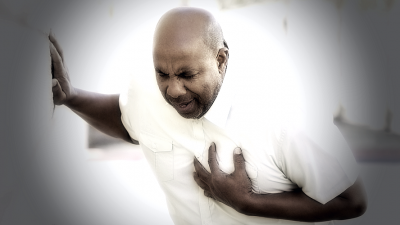
Globally, obesity and overweight continue to grow yearly. It has nearly tripled since 1975. Today, around 2.5 billion people are obese and overweight.
According to the Malaysia National Health and Morbidity Survey (NHMS) 2019, about half of the adults in Malaysia were obese (19.7 per cent) and overweight (30.4 per cent) compared to 2011, with 15.1 per cent obese and 29.4 per cent overweight.
Obesity was once considered a high-income country problem; however, now it is widely observed in low- and middle-income countries as well, including Malaysia, particularly in urban settings.
In Putrajaya, 63.3 per cent of adults are obese and overweight, exceeding the national rate of 50.1 per cent.
Obesity and overweight increase the risk of most cancers, including breast, colorectal, ovarian, uterine, esophageal, kidney, pancreatic and liver cancers.
Compared with normal-weight women, uterine cancer is two to four times more likely in women with obesity. Obese women also have a 20 to 40 per cent higher chance of having breast cancer than normal-weight women.
The link between obesity and cancer risk is complex. It involves increased chronic inflammation, higher insulin-like cancer growth factor levels and hormones.1,2
Obesity is preventable. The fundamental cause of obesity is an energy imbalance between calorie intake and calories expended. A positive energy balance, in which energy intake exceeds expenditure, causes weight gain attributable to body fat.
Multiple factors are associated with cancer, but avoiding obesity is an important step to lower cancer risks.
Limiting energy intake from total fats and sugars, increasing consumption of fruits and vegetables, and engaging in regular physical activity can prevent obesity and cancer.
In conjunction with the 2023 World Obesity Day (March 4) theme “Changing Perspectives: Let’s Talk About Obesity,” let us all work together by managing our body weight to ensure happier, healthier and longer lives for everyone.
References:
- Setiawan, V. W., Yang, H. P., Pike, M. C…(2013). Type I and II endometrial cancers: have they different risk factors?. Journal of clinical oncology : official journal of the American Society of Clinical Oncology, 31(20), 2607–2618.
- Munsell, M. F., Sprague, B. L., Berry, D. A., Chisholm, G., & Trentham-Dietz, A. (2014). Body mass index and breast cancer risk according to postmenopausal estrogen-progestin use and hormone receptor status. Epidemiologic reviews, 36(1), 114–136.

(Dr. Soh Yih Harng, DrPH candidate; Professor Dr. Moy Foong Ming, Center for Epidemiology & Evidence-Based Practice, Department of Social Preventive Medicine, Faculty of Medicine, Universiti Malaya.)
ADVERTISEMENT
ADVERTISEMENT








































